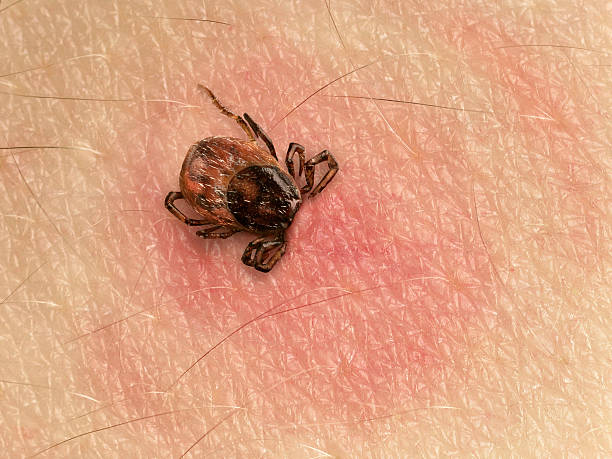The Silent Struggle: What Lyme Disease Steals From You — And How to Fight Back
I didn’t understand the true weight of Lyme disease until I saw it in someone I love. Not just the fatigue or the pain—but the slow unraveling of identity. Once

I didn’t understand the true weight of Lyme disease until I saw it in someone I love. Not just the fatigue or the pain—but the slow unraveling of identity. Once outgoing, joyful, full of life—she became a shell, misdiagnosed, misunderstood, and dismissed.
Lyme disease doesn’t knock on the door like a polite illness. It barges in, wrecks your systems, and then hides in the corners of your body while doctors run tests that come back “normal.”
It’s called the “great imitator” for a reason. And the truth is, it’s more common, more serious, and more complex than most of us have been led to believe.
A Growing Epidemic Hiding in Plain Sight
Lyme disease is caused by the bacterium Borrelia burgdorferi, transmitted to humans through the bite of infected black-legged ticks, commonly known as deer ticks. These ticks are about the size of a poppy seed—easy to miss, but their bite can trigger a lifetime of suffering.
Each year, the CDC estimates over 470,000 Americans are diagnosed and treated for Lyme disease. But experts say this number may vastly underrepresent the reality, especially for chronic and late-stage sufferers whose symptoms never resolve.
How You Get It — And How to Avoid It

Ticks don’t jump or fly—they wait on tall grasses, leaves, or logs and latch on when a warm body brushes by.
Risk factors:
- Walking in wooded or brushy areas (especially in the Northeast, Midwest, and Pacific Northwest)
- Gardening or hiking without insect repellent
- Owning pets that go outside
- Sitting on logs or leaning against trees
Prevention Tips:
- Use EPA-registered insect repellents with DEET, picaridin, or permethrin-treated clothing
- Shower within 2 hours of outdoor exposure
- Tuck pants into socks and wear long sleeves
- Do daily full-body tick checks
- Inspect pets and gear
If a tick is attached for 36–48 hours, the risk of Lyme transmission increases dramatically. Removing it within that window is critical.
Not Just Fatigue: What Lyme Really Does to the Body
Early Lyme symptoms may resemble the flu: fever, chills, headache, fatigue, muscle aches, and a telltale bullseye rash(which only shows up in about 70% of cases).
But if left untreated—or not fully treated—Lyme can infiltrate your:
- Nervous system → Causing meningitis, facial paralysis (Bell’s palsy), memory issues, and brain fog
- Heart → Leading to Lyme carditis, which can disrupt heart rhythms
- Joints → Chronic arthritis, especially in knees
- Immune system → Weakening your defense against other infections
- Psychological health → Triggering anxiety, depression, insomnia, even psychosis in rare cases
Over time, Lyme can break down immune defenses so severely that the body develops autoimmune-like symptoms. Some people even develop co-infections like Babesia, Bartonella, or Ehrlichia—other pathogens carried by the same ticks.
Read About: Silent Trouble: The Early Kidney Warnings Too Many People Ignore
Can Lyme Disease Be Fatal?
In rare cases, yes.
When Lyme invades the heart, it can cause Lyme carditis, which disrupts the heart’s electrical signals, leading to dizziness, shortness of breath, fainting—or in extreme cases, sudden cardiac death.
There have been documented deaths due to complications from untreated Lyme. And while it’s not considered a “high-mortality disease,” its long-term destruction of physical and mental health has led to suicides among those who felt hopeless, unheard, and unsupported.
That’s why awareness isn’t just important—it’s life-saving.
Lyme or Something Else? Common Misdiagnoses
One of the most dangerous things about Lyme is how easily it masquerades as something else. Patients are often misdiagnosed with:
- Chronic fatigue syndrome (CFS)
- Fibromyalgia
- Multiple sclerosis (MS)
- Rheumatoid arthritis
- Depression or anxiety
- ALS or Parkinson’s disease
- Lupus
- Meningitis
Some are given antidepressants instead of antibiotics. Others are told, “It’s all in your head.”
This diagnostic delay can mean the difference between recovery and lifelong illness.
How Lyme Is Diagnosed (And Why It Often Fails)
The current diagnostic tools are outdated and incomplete.
The standard two-tier test (ELISA followed by Western blot) only detects antibodies to the Lyme bacterium—not the bacteria itself. This means if your body hasn’t mounted a strong immune response—or if it’s too early or too late—you may test negative, even while Lyme quietly spreads.
Alternative testing options include:
- IGeneX or ArminLabs: More comprehensive private labs
- PCR tests: Looks for actual bacterial DNA, though still limited in sensitivity
- Clinical diagnosis: Some Lyme-literate doctors treat based on symptoms and history, especially when tests are inconclusive
Celebrities Shedding Light on Lyme
The list of celebrities diagnosed with Lyme disease is longer than most people realize:
- Justin Timberlake (newly public): Struggled with unexplained fatigue and muscle pain before learning it was Lyme. He’s now advocating for better awareness.
- Avril Lavigne: Said she felt like she was “drowning” for months before getting diagnosed.
- Shania Twain: Lyme affected her vocal cords, forcing her to retreat from performing.
- Yolanda Hadid, along with Bella and Anwar Hadid: All three have chronic Lyme and have spoken openly about the toll on their lives.
- Ben Stiller, Alec Baldwin, and Debbie Gibson have also reported Lyme-related health issues.
Their stories are helping normalize a disease still treated with skepticism—especially when symptoms don’t follow a neat, clinical timeline.
Treatments: There Is Hope
When caught early, Lyme can often be treated with a 2-4 week course of antibiotics, usually doxycycline.
But for those with persistent symptoms, treatment becomes more complex:
- Long-term antibiotics (oral or IV)
- Herbal protocols (Buhner, Cowden)
- Anti-inflammatory diets and detox protocols
- Hyperbaric oxygen therapy
- Immune support supplements
- Neurological rehab and psychotherapy
Recovery is possible—but it can take months or years. And many fight to get insurance coverage for treatments still deemed “controversial.”
Living with Lyme: A Daily Battle
People with Lyme often live in a state of medical limbo. Friends don’t understand. Employers question absences. Doctors dismiss lingering symptoms.
But the truth is: healing from Lyme is not linear. Some days feel like progress. Others feel like drowning.
“Lyme took everything from me—my energy, my job, my relationships,” one patient told me. “But it also gave me a voice. And I’ll use it to help others not go through the hell I did.”
Lyme Doesn’t Care Who You Are
Tick-borne illness doesn’t discriminate. It doesn’t care if you’re rich, famous, fit, or careful. You can take all the right precautions and still be blindsided.
But knowledge is power. And the more we understand this disease, the more we can fight back—with early detection, compassionate care, and relentless advocacy.
So check yourself. Listen to your body. Advocate fiercely. And never, ever let anyone tell you it’s all in your head.
If you’ve been exposed to ticks or are struggling with unexplained symptoms, don’t wait. Trust your instincts. Get tested. Seek out a Lyme-literate doctor.
Because the earlier you fight Lyme, the better your chances of winning.
By Ravoke News Desk for Ravoke.com








